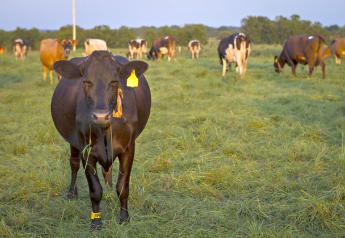Cattle Disease Diagnostics: Understanding the Clues

Solving an outbreak in a group of calves can feel a lot like an investigation. Use diagnostics to answer questions and uncover clues in a BRD outbreak.
When working with a veterinarian on a diagnostic issue, such as BRD, Vickie Cooper, DVM, Beef Technical Services with Zoetis, advises the first step is to slow down and ask some smart questions. For instance, solving a respiratory outbreak in a group of calves a veterinarian and producer might find themselves looking for clues and asking questions to point them to the culprits.
They might turn to diagnostic tissue testing for answers, but without a few guidelines, they won’t be any closer to solving their mystery than when they started.
“It’s essential that you contact your veterinarian immediately — before extensive treating and before the mortality rate goes up,” said Dr. Cooper. “From there, you can work together to determine what your goals are and what questions to ask.”
Smart Questions, Smart Answers
When working with a veterinarian on a diagnostic issue, Dr. Cooper advised that the first step is to slow down and ask some smart questions, such as:
- Where and how were the cattle purchased?
- How did the cattle look coming off the truck?
- Did they get vaccinated on arrival?
- Did they start eating as soon as they arrived?
- Are there ration factors to consider?
- Are there signs or symptoms of a virus circulating?
- Is there a nutritional issue, such as a mineral deficiency?
- Could we have a BVD-PI in the group?
“Once you know the diagnostic question you are asking, you can work together to come up with solutions for what’s going on,” Dr. Cooper said. “You’ll also want to determine if you are collecting the right tissues or samples to answer your specific question.”
If there are suspicions the issue is bovine respiratory disease (BRD), the veterinarian should conduct a postmortem exam to gather information. They also may decide to collect antemortem nasal or trans-tracheal wash samples for lab analysis.
Dr. Cooper said a key to the success of these tissue diagnostics is to sample untreated animals if possible. If nutritional issues are a concern sample those animals that are clinically normal with liver biopsies.
Animals that have been treated may impact diagnostic results, particularly bacterial culture. Sampling a clinically ill animal for evaluation of nutritional status may give the wrong impression of underlying factors.
“Taking samples doesn’t necessarily mean that you are delaying treatment or facing more losses,” Dr. Cooper said. “In many situations, your veterinarian may say we need to send samples to the lab to help determine what’s going on, but we are going to treat them now as well.
Management Matters
But the diagnostic investigation doesn’t stop there. And it may not even start there.
“The one thing to remember is that there may be a management component to the question,” Dr. Cooper said. “Pathogenic organisms can exist in animals and never cause a problem. But management changes could potentially trigger a reaction.”
Various factors, such as ration changes, unvaccinated calves and changing weather patterns, can work together to create a disease scenario.
For example, a ration change can disrupt rumen microflora and stimulate a metabolism change. That same ration change tied with overcrowding, bad ventilation, storm systems and temperature variations can cause a BRD break.
Answers to key management questions can help identify the correct diagnostic test and interpret the results.
However, Dr. Cooper pointed out that it also makes it difficult to establish an industry-wide standard operating procedure for collecting diagnostic samples because no question or corresponding answer will ever be the same.
It’s All Up to Interpretation
Finally, if tissues are sent to a lab, think about how the data will be used once it is received. Dr. Cooper said the biggest errors are often made in overinterpretation of that data.
“It can be tempting to lock on to a positive result and assume it’s the problem,” Dr. Cooper said. “We want easy answers and something to blame. However, the reality is there are many factors impacting each case.”
In the end, it all comes down to identifying the producers’ goals. Those goals will ultimately determine which diagnostic option will yield the most useful information.
Dr. Cooper’s final piece of advice is to take the basic first step. “Remember, if you have a problem, call your veterinarian now. Don’t wait, delaying your veterinarian’s involvement can reduce treatment response, cost time, and money," Dr. Cooper said.
For more information on BRD Management read "3 Steps to Stay Ahead of BRD," as told by Oklahoma stocker operation co-owner Bill Gallery.
Image provided by Zoetis United States
Sponsored by Zoetis







